Do you know the secret to getting a crispy crust on your pizza? At first, you might assume that you need to add less water, but you’re wrong. To get a perfectly crispy crust, you’ll want to increase how much water you put into your dough formula. This gives you more fluid dough to knead, and it’ll expand more during those first minutes after you put it in the oven.
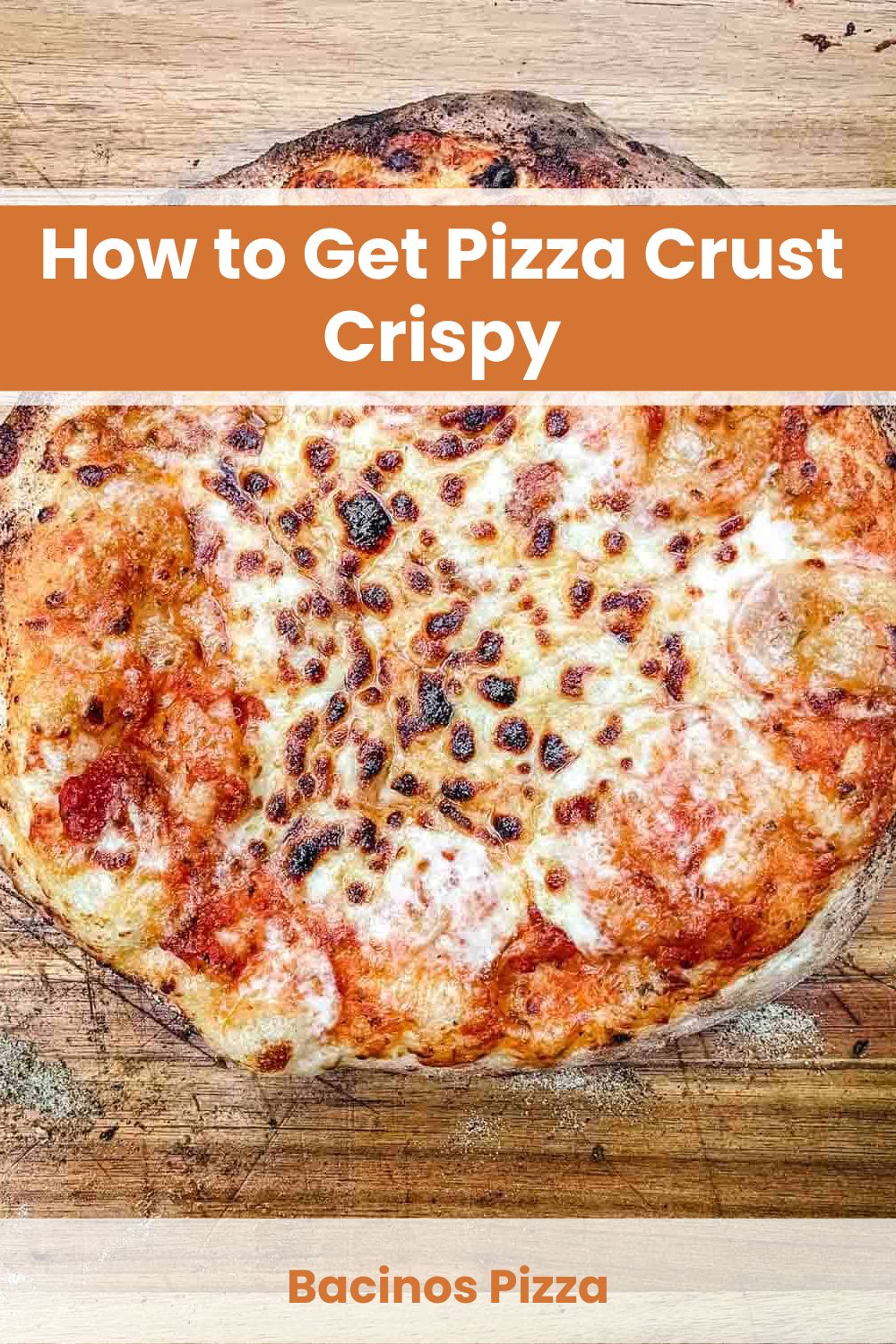
The less dense you manage to make your dough, the better thermal block it’ll get to any heat that rises from the bottom of the oven. As a result, the oven’s heat won’t move through the dough as freely into your sauce, where it dissipates into steam. Instead, it’ll build up at the bottom of your dough, giving you a crispier texture.
If you’re still not sure, don’t worry. From teaching you how to correctly preheat your oven and the correct technique to distribute the sauce, we’ll touch on everything you need to learn about how to get pizza crust crispy below.
Preparing the Pizza Dough
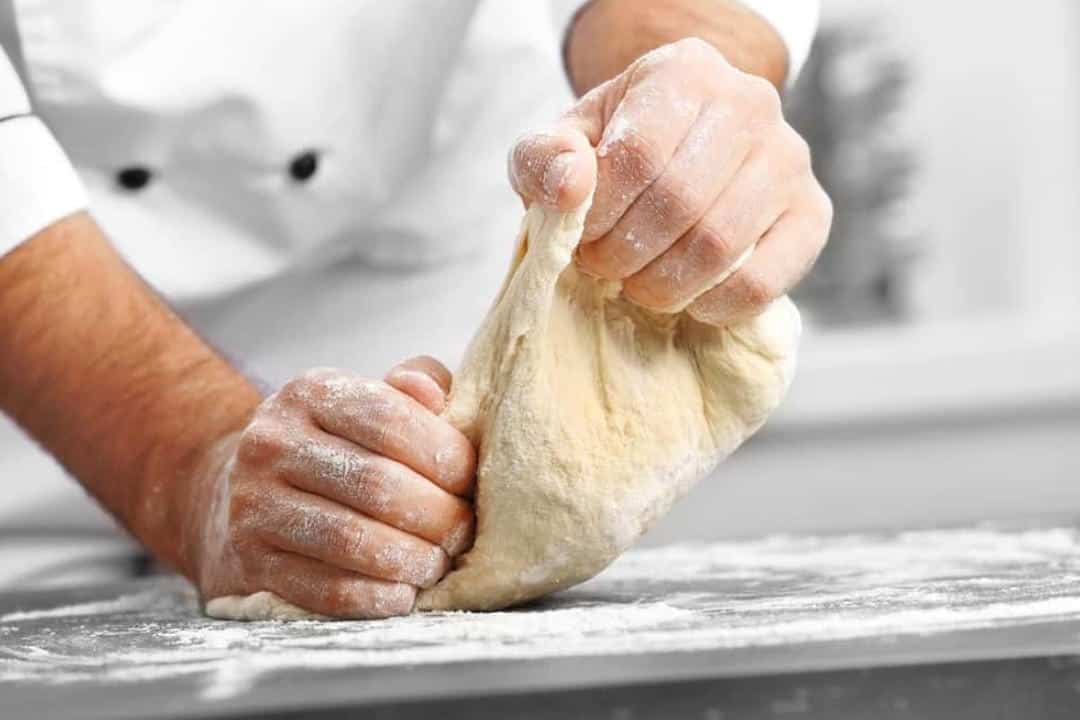
You may not know this, but learning how to prepare the dough lays the foundation for a crispy crust. Be careful when you pick your flour, sprinkle on some sugar, get fresh yeast, and hydrate the dough are all important. You also want to up your kneading game and let the dough rest, and we’ll explain why below.
- Use High-Quality Flour– Your flour directly impacts your pizza dough’s texture, so using a high-quality product is more likely to give you a crisp texture.
- Add A Little Bit Of Sugar – Sugar tenderizes your pizza dough and it helps create a fine crumb to make it more extensible. Sugar also helps brown the dough.
- Importance Of Using Fresh Yeast – Fresh yeast is alive, and it improves the dough’s gluten structure, enhances the aroma, and improves the flavor.
- Proper Hydration Levels– The higher your hydration levels are, the faster it rises. In turn, this gives your yeast more room to move. However, too much water will weaken the gluten and create large air pockets.
- Kneading And Developing Gluten Structure– This step helps develop the gluten and create small walls. These walls trap the CO2 the fermentation process creates, and this helps your crust rise during the baking process.
- Letting The Dough Rest And Ferment – Allowing the dough to rest gives the gluten structure time to relax. More relaxed doughs rise better when you bake it, making it full of big holes and crispier.
| Pizza Style | Dough Hydration Level | Flour Type |
| New York | 60% to 65% | Enriched high gluten bread flour |
| Artisan | 55% to 65% | Type 00 to high gluten flour |
| Neapolitan | 55% to 62.5% | Italian 00 or 0 wheat flour |
| Chicago Deep Dish | 40% to 55% | All-purpose flour |
| California Crispy | 60% to 70% | All-purpose or bread flour |
Shaping the Pizza Crust
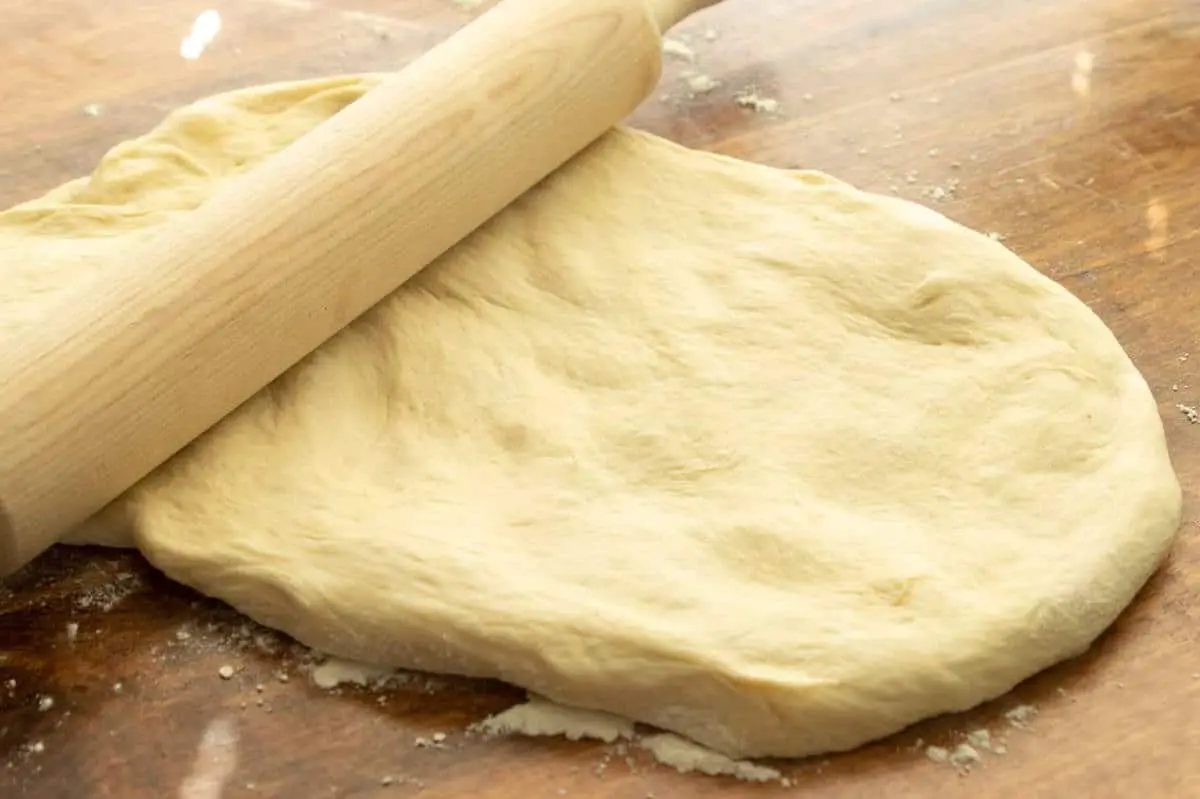
Shaping your pizza crust will determine the size and thickness of the finished pizza, so you want to take care to do this correctly. To get a crispy crust, you’ll:
- Rolling The Dough Thinly
- Creating A Raised Edge For A Crispy Outer Crust
- Poke Holes In The Dough To Avoid Air Pockets
Pre-Baking Strategies
Don’t skip pre-baking your pizza! Taking a few minutes to preheat your oven and using pizza stones or baking steel help you make a great crust. Set an alarm if you have to so you remember to switch your oven on before you make your pizza, and follow these simple tips:
Preheat Your Oven
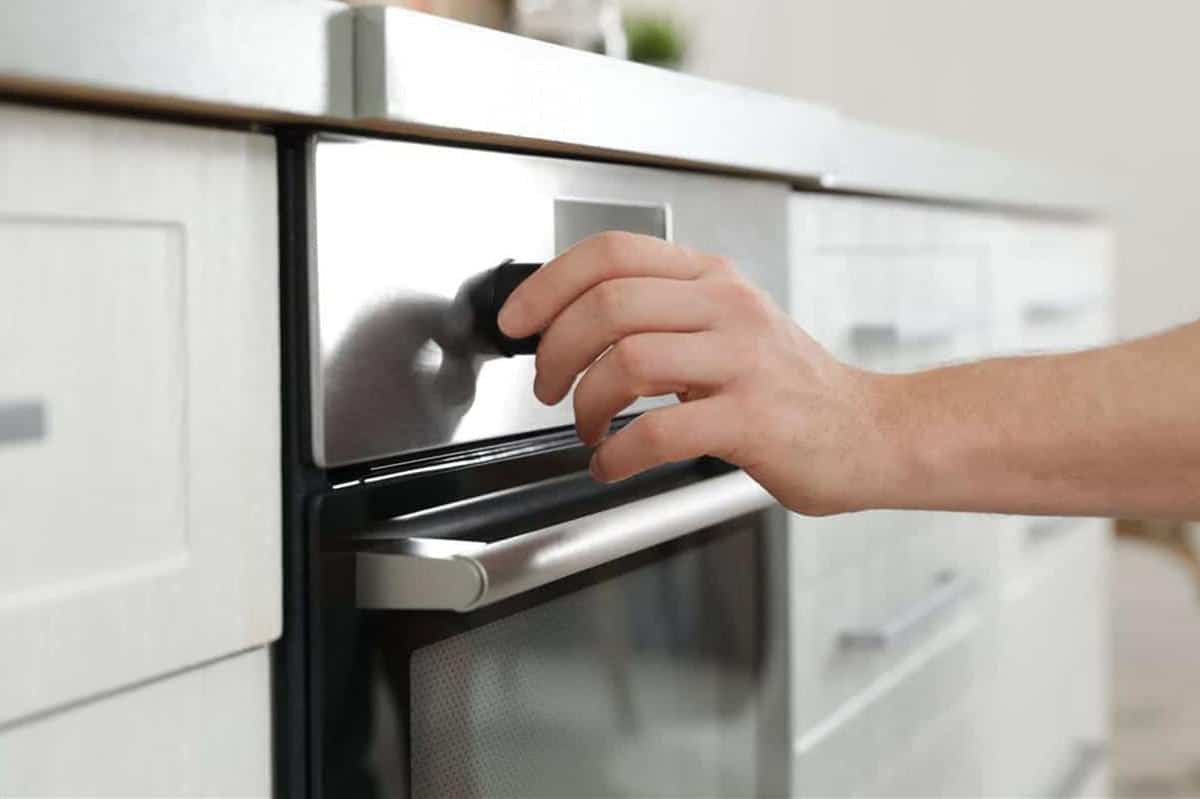
If you start your crust in an unheated oven, the moisture and air get less time to expand, and this leads to hard, dry, and tough dough. So, you’ll want to preheat your oven to 450°F to 500°F (250°C to 260°C) before you pop your pizza in. Thicker crust pizzas require temperatures around 400°F (200°C) to avoid burning them. Ideally, you’ll preheat the oven for 20 to 30 minutes before sliding the pizza in.
Use a Pizza Stone
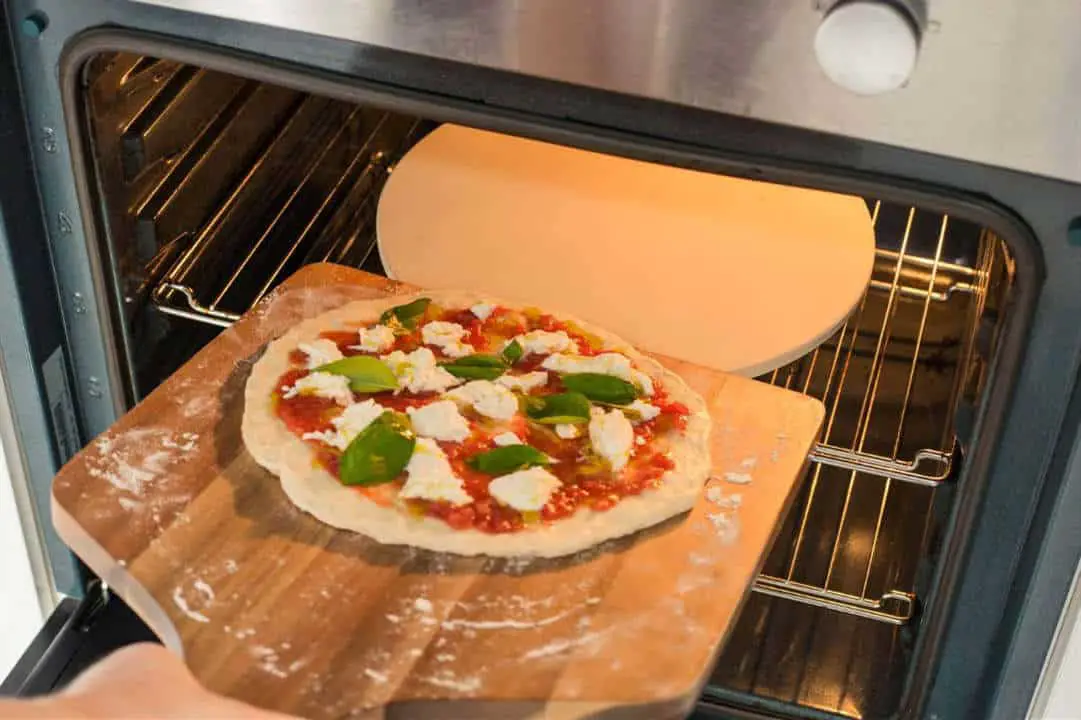
Pizza stones are sturdy, heavy, flat pieces of unglazed clay that typically come an inch thick, and they’re popular because a lot of home ovens can’t get hot enough to cook certain styles of pizza. Thinner crusts are generally the biggest casualties of this problem, and they’re more prone to turn out flat or slightly soggy without crisping up.
Using a pizza stone to cook your crispy crust pizza ensures that it easily absorbs the heat and retains it throughout the cooking process. This mimics how a pizzeria’s brick oven works, and it raises the temperature by giving the pizza an extra-hot surface to bake on.
Use a Baking Steel
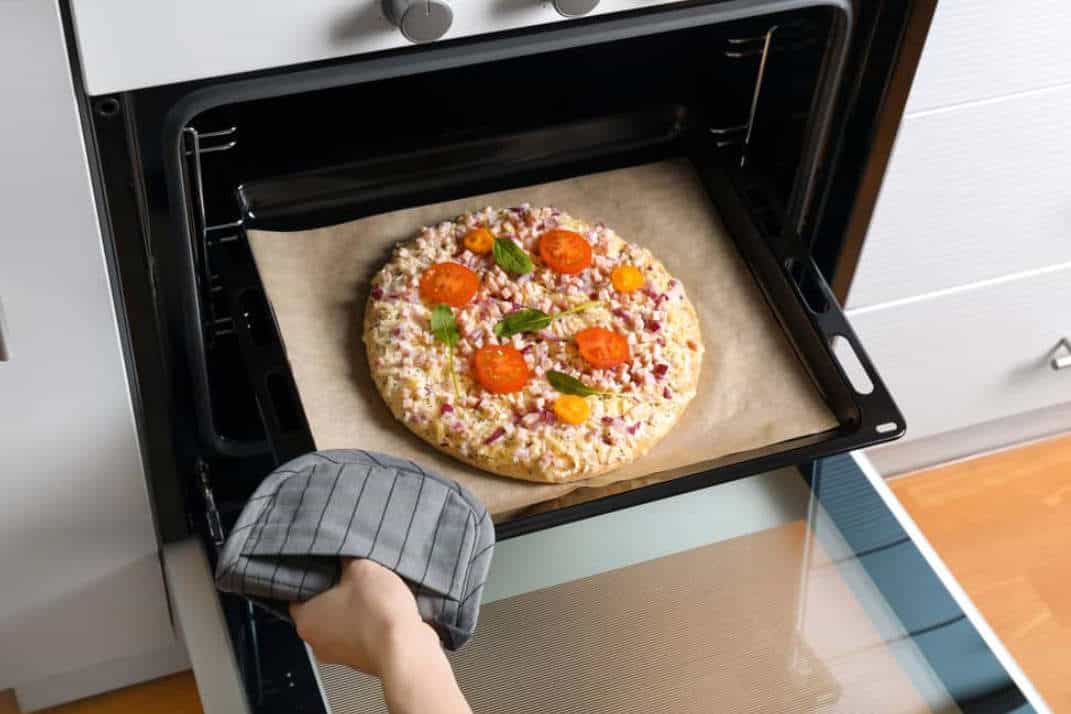
If you don’t want to use a pizza stone, a piece of baking steel is a great substitute. This is a thick sheet of raw steel, cut down to size, polished to smooth out the edges, and sealed and seasoned with oil to stop it from rusting. Baking steel can help make the heat more even and intense in your oven, ensuring your crust comes out crispy.
Just like any pizza stone, you want to preheat your oven with the baking steel inside. Be very careful when you take it out to add your pizza so you don’t burn yourself as it can get to several hundred degrees.
Par-Bake Your Crust
Par-baking is better known as blind baking, and it’s a common practice with people who routinely bake things like pies or custards. Basically, you take your dough and bake it for 10 to 15 minutes without any toppings. You pull it out of the oven, add your desired sauce, veggies, and meat, and pop it back in to continue baking.
You’re not baking your crust the whole way through the first time, but you’re making it roughly halfway done so it finishes with a nice, crispy crust on the bottom. Additionally, if you want to add a lot of sauce, blind baking the crust reduces the chances of it absorbing a lot of the oil and getting soggy.
Toppings and Sauce Management
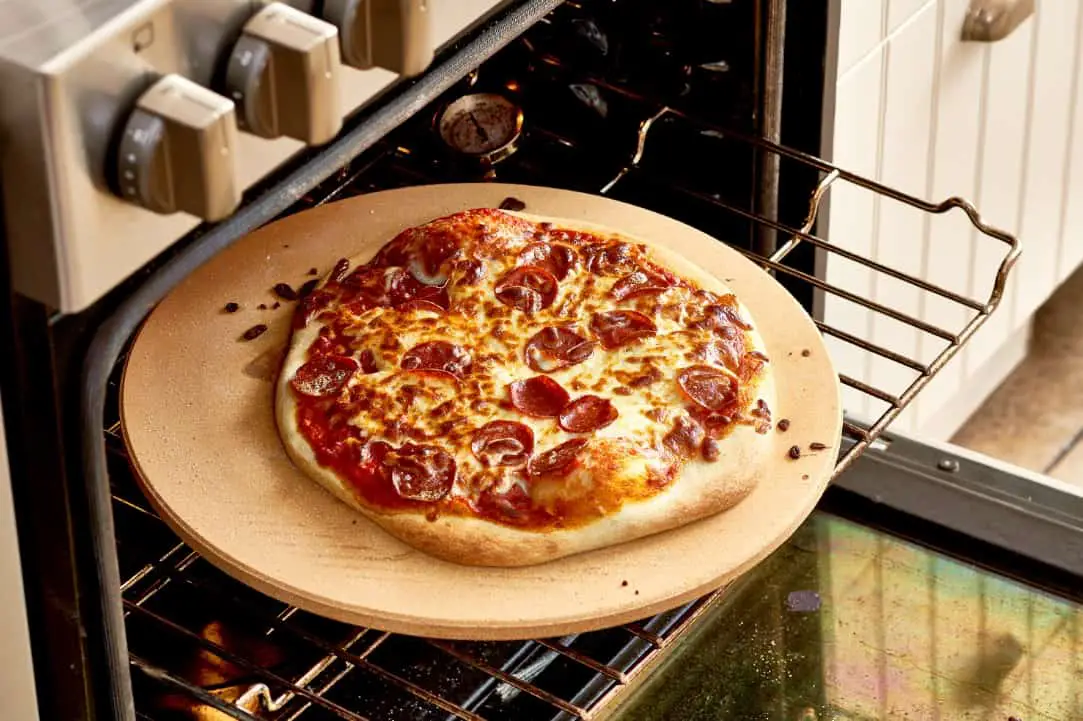
Even though you may want to loa your crust with toppings and sauce, going overboard can make the crust soak in the grease or excess sauce and it’ll never crisp up. To fix this, you should:
Use Less Sauce to Avoid Sogginess
Resist the urge to dump a load of sauce onto your crust until it’s drowning. If you do, the sauce will start soaking into the crust and you’ll get a soggy mess. Instead, carefully portion out your sauce based on your pizza size, like we outlined below for you. Remember, adding a little sauce can go a long way flavor wise.
| Pizza Size | Sauceless Border | Regular | Light |
| 10-Inch | ¾-inch | 3 ounces | 1.5 ounces |
| 12-Inch | ¾-inch | 4 ounces | 2 ounces |
| 14-Inch | ¾-inch | 6 ounces | 3 ounces |
| 16-Inch | ¾-inch | 8 ounces | 4 ounces |
| 12-Inch Deep Dish | ¾-inch | 4 ounces | 2 ounces |
| 14-Inch Deep Dish | ¾-inch | 6 ounces | 3 ounces |
| 12-Inch Thin Crust | ⅛-inch | 4 ounces | 2 ounces |
| 14-Inch Thin Crust | ⅛-inch | 6 ounces | 3 ounces |
| Small Rectangle | ¾-inch | 3 ounces | 1.5 ounces |
| Medium Rectangle | ¾-inch | 4 ounces | 2 ounces |
| Large Rectangle | ¾-inch | 6 ounces | 3 ounces |
Choose Toppings with a Low Moisture Content
If you like to add toppings like bell peppers, onions, and mushrooms, pop them into the oven for 5-10 minutes before you add them to your pizza. These vegetables are like 90% water, and this water will seep into the crust if you don’t get rid of it. You can also pick vegetables with lower moisture levels to avoid this issue altogether.
Don’t Overload Your Pizza with Toppings
When you make your pizza, don’t pile on the toppings. Instead, carefully spread a few ounces of each topping over your crust. Adding too many can cause oils and fats to escape as you bake it and sink into the crust.
Baking Techniques for a Crispy Crust
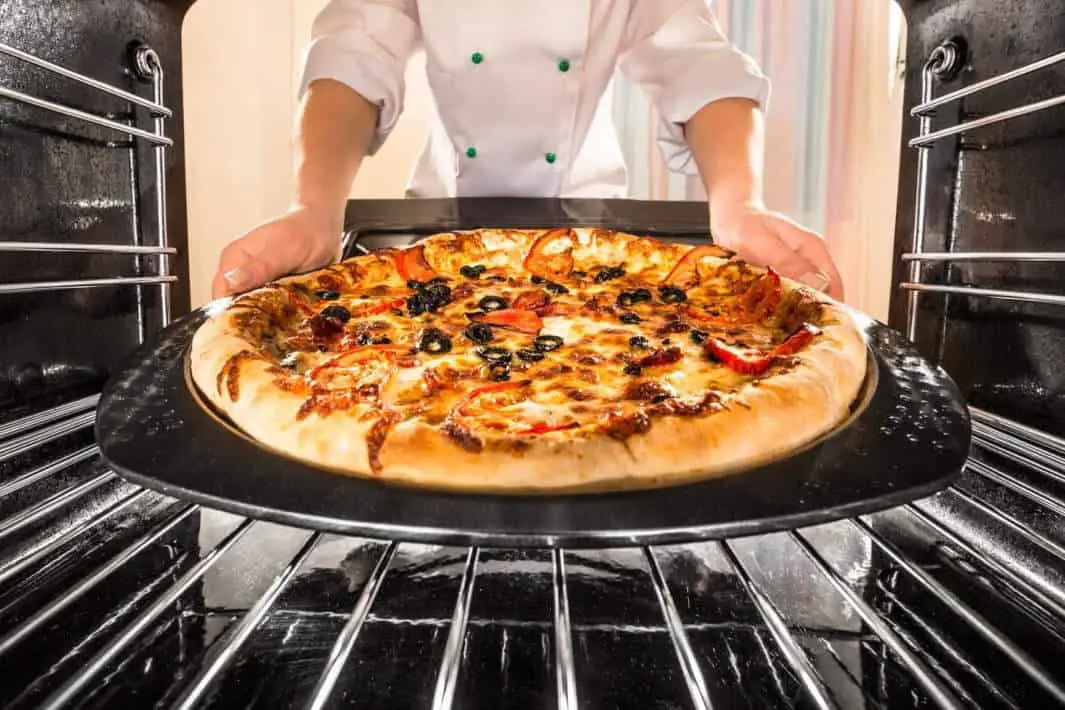
You can’t just throw the dough on the table, slather on sauce, and slap on toppings and hope it turns out. Instead, carefully portioning everything out and using specific baking techniques will give you a crispy crust. They include:
- Brush The Crust With Olive Oil – Get a brush and paint on a thin layer of olive oil on your pizza. The oil will stop moisture from sinking in.
- Proper Oven Temperature– Crank your oven up to at least 450°F to help the gasses in the dough expand and form a fluffier crust.
- Positioning The Pizza In The Oven– If you’ve ever opened the door to pull something out of the oven, you know there are warmer spots. Put your pizza on the bottom rack for most of the baking time and move it to the top rack to brown the cheese in the last few minutes.
- Baking Time For Optimal Crispiness– For a ½-inch thick dough in a 425°F oven, bake it for roughly 15 minutes. This time varies based on the temperature and crust thickness.
Post-Baking Tips
Get a wire rack and set it on the counter by your oven. At the end of the baking time, put your pizza on this rack and let it rest for two to three minutes. When you do, you let the steam escape so it doesn’t go back into the crust.
Get a sharp pizza cutter or chef’s knife and cut your pizza after it sits for two or three minutes. Cutting it now gives the sauce a few minutes to set so it doesn’t leak and make a mess, but the crust won’t be so tough that it tears.
Wrapping Up
We’ve given you several techniques and tips to use to help stop your pizza crust from getting soggy. We encourage you to try at least one tip from each category, if not more, to increase your chances of having a successful pizza. Take this guide on how to get a pizza crust crispy and stick it in your recipe book so you can pull it out and use it every time you make this tasty treat.

Barbara is an enthusiastic food-exploring person that goes through different culinary experiences. She got inspired by creating a pizza blog post after she tasted one of the best-selling pizzas in Toledo.